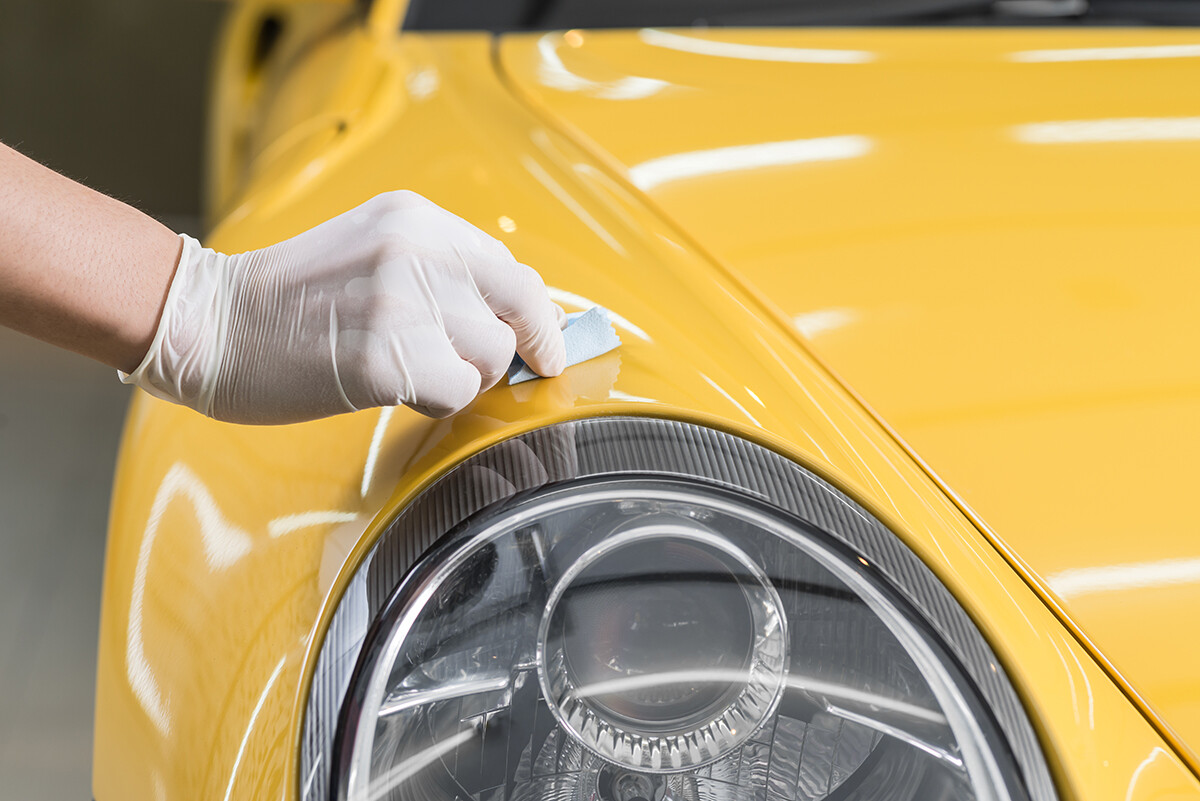Unveiling the Reasons Ceramic Coating Stands Apart as the Ultimate Option for Automotive Surface Area Protection
The automotive industry consistently seeks cutting-edge options for surface protection, and ceramic layer has actually emerged as a leading challenger. As we check out the multifaceted advantages of ceramic coverings, one have to think about whether this modern technology genuinely stands for the pinnacle of automobile surface defense.
Outstanding Resilience

Furthermore, ceramic finishings are engineered to resist minor scratches and swirl marks, a typical problem for vehicle proprietors. The firmness of the coating gives an efficient obstacle against abrasions, maintaining the aesthetic charm of the car for an extensive period. Moreover, the durability of ceramic layers is notable; they can last numerous years with appropriate maintenance, reducing the need for frequent reapplication and offering long-lasting cost-effectiveness.
In addition, the application of ceramic finishes needs a precise process, guaranteeing that the surface area is free and sufficiently ready from impurities. This focus to detail not just enhances the finishing's toughness yet also adds to the overall honesty of the vehicle's coating. As an outcome, ceramic layers are progressively checked out as a necessary financial investment for maintaining automotive aesthetics and worth.
Superior Hydrophobic Features
Hydrophobic residential or commercial properties are a characteristic of ceramic finishings, making them a suitable choice for automotive surface defense. These sophisticated finishes produce a highly water-repellent surface area that considerably minimizes the bond of grime, water, and dust.
The remarkable hydrophobic nature of ceramic coatings originates from their molecular structure, which forms a protective layer that is both smooth and non-porous. This barrier efficiently avoids wetness from permeating the paintwork, helping to ward off prospective corrosion and deterioration. Additionally, the glossy surface area developed by ceramic layers enhances the vehicle's aesthetic appeal, as it preserves a glossy surface that shows light wonderfully.

UV Protection Benefits
One of the most significant benefits of ceramic finishings is their ability to offer durable UV protection for vehicle surfaces. This feature is important, as long term exposure to ultraviolet rays can cause significant damage, including paint fading, oxidation, and damage of safety layers. Ceramic finishings create a protective obstacle that effectively mirrors hazardous UV radiation, consequently protecting the stability and vibrancy of the lorry's exterior.
The degradation of paint triggered by UV rays can not only lessen the aesthetic appeal of a vehicle however can also reduce its resale worth. By integrating ceramic finishings, car proprietors can secure their investment against the rough effects of sunshine (Ceramic Coating Cost Naples). This protective layer works as a guard, guaranteeing that the lorry preserves its original color and finish over time
Moreover, the UV protection supplied by ceramic coverings is a long-lasting option, commonly outlasting traditional waxes and sealers, which require frequent reapplication. With the capacity to hold up against the components, ceramic layers eventually contribute to extended car long life and decreased maintenance initiatives. Consequently, the application of ceramic coatings is a smart choice for those looking for to safeguard their autos from the damaging results of UV exposure.
Boosted Aesthetic Charm

In addition, ceramic finishings aid maintain the automobile's color vibrancy by creating a protective barrier versus environmental contaminants, such as dirt, grime, and toxins. This conservation of shade guarantees that the car looks newer for longer, improving its general appearance (Ceramic Coating Cost Naples). The hydrophobic residential properties of ceramic layers additionally add to this aesthetic enhancement; water grains up and rolls off the surface, lowering the possibilities of water places and spots that can mar the finish
In addition to their protective qualities, ceramic coverings supply a glossy and smooth surface area, which not just boosts the visual appeal but additionally makes upkeep less complicated. The combination of these features causes an automobile that not only performs far better yet also astounds sightseers with its spectacular appearance.
Long-Term Price Performance
The financial investment in ceramic coatings not just improves a vehicle's visual appeal yet also uses significant lasting cost performance. While the first application of ceramic finish might seem higher contrasted to traditional waxes or sealants, the toughness and protective top qualities of ceramic layers warrant the expenditure. Unlike traditional products that call for regular reapplication, ceramic coverings can last for several years, substantially lowering description maintenance expenses.
Ceramic coatings develop a durable obstacle versus ecological contaminants such as UV rays, roadway gunk, and acid rain, lessening the need for expensive repairs and painting. In addition, the hydrophobic properties of these coatings make cleansing easy, causing minimized labor prices and much less time invested in upkeep. The improved defense likewise assists keep the automobile's resale value, as an unspoiled outside can attract potential check my blog purchasers and regulate a higher price.
Verdict
To conclude, ceramic coating becomes a premium option for auto surface security due to its outstanding toughness, hydrophobic properties, and efficient UV protecting. The improvement of aesthetic appeal through a high-gloss coating better adds to the car's general aesthetic attraction. In addition, the lasting cost-effectiveness of ceramic coverings minimizes upkeep initiatives while preserving resale value. Collectively, these characteristics position ceramic layers as an ideal solution for preserving and improving the longevity of automobile surface areas.
The slick surface area developed by ceramic finishings improves the lorry's visual appeal, as it preserves a glossy coating that mirrors light wonderfully.
While the primary function of ceramic finishes is to protect automobile surfaces, they also dramatically boost the lorry's aesthetic appeal. While the initial application of ceramic layer may appear higher contrasted to standard waxes or sealants, the sturdiness and safety qualities of ceramic layers warrant the expenditure.In verdict, ceramic finish emerges as a premium choice for vehicle surface protection due to its phenomenal longevity, hydrophobic buildings, and reliable UV securing. Jointly, these features position ceramic finishings as an ideal option for maintaining and boosting the longevity of vehicle surfaces.